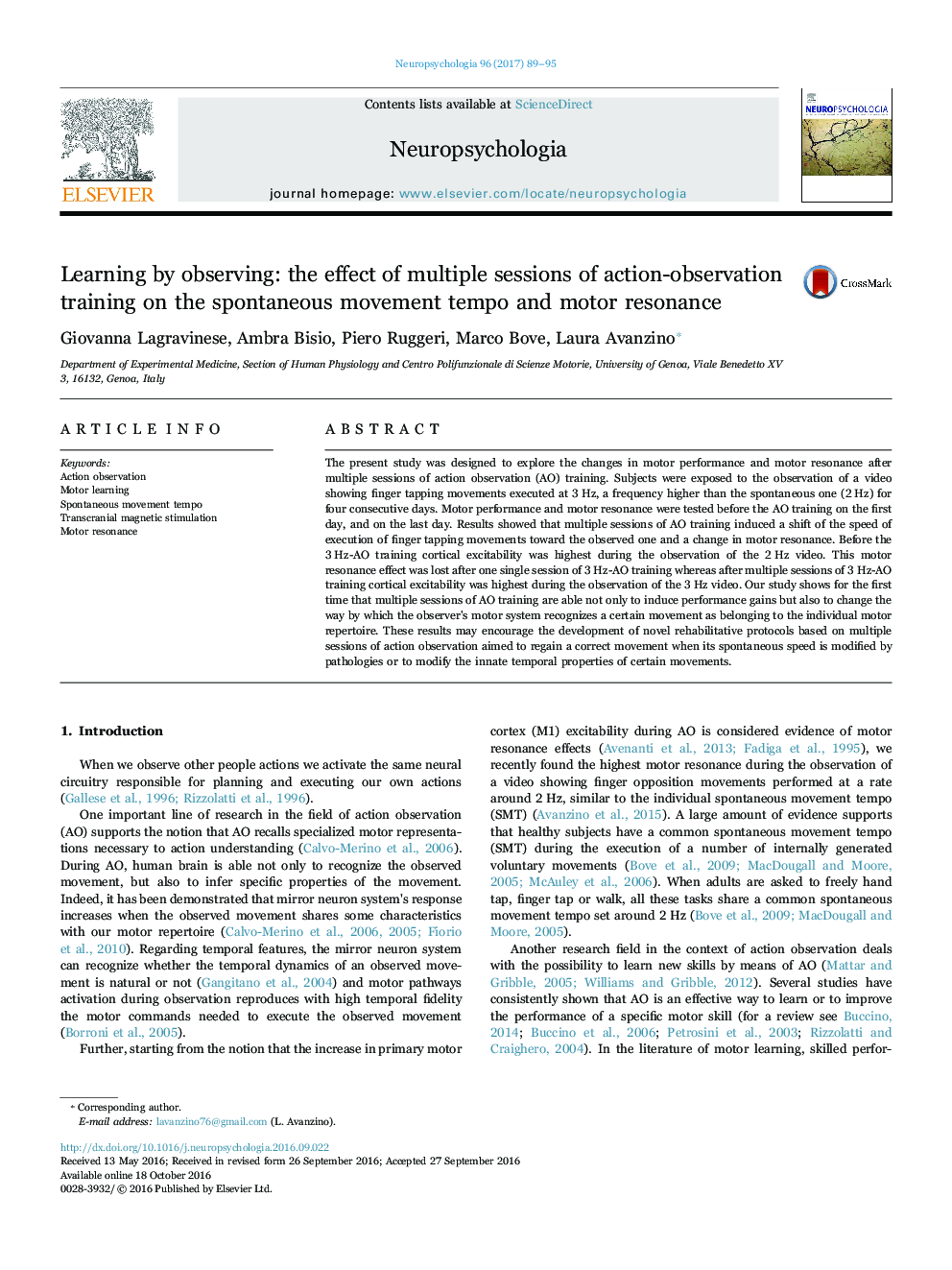| Article ID | Journal | Published Year | Pages | File Type |
|---|---|---|---|---|
| 5045401 | Neuropsychologia | 2017 | 7 Pages |
â¢M1 excitability resonated with the spontaneous tempo (SMT) of the observed movement.â¢Multiple sessions of action observation (AO-training) induced SMT changes.â¢After AO-training M1 excitability resonated with the tempo of the trained motor act.â¢This work adds new evidence on the neurophysiological basis of AO-training.
The present study was designed to explore the changes in motor performance and motor resonance after multiple sessions of action observation (AO) training. Subjects were exposed to the observation of a video showing finger tapping movements executed at 3Â Hz, a frequency higher than the spontaneous one (2Â Hz) for four consecutive days. Motor performance and motor resonance were tested before the AO training on the first day, and on the last day. Results showed that multiple sessions of AO training induced a shift of the speed of execution of finger tapping movements toward the observed one and a change in motor resonance. Before the 3Â Hz-AO training cortical excitability was highest during the observation of the 2Â Hz video. This motor resonance effect was lost after one single session of 3Â Hz-AO training whereas after multiple sessions of 3Â Hz-AO training cortical excitability was highest during the observation of the 3Â Hz video. Our study shows for the first time that multiple sessions of AO training are able not only to induce performance gains but also to change the way by which the observer's motor system recognizes a certain movement as belonging to the individual motor repertoire. These results may encourage the development of novel rehabilitative protocols based on multiple sessions of action observation aimed to regain a correct movement when its spontaneous speed is modified by pathologies or to modify the innate temporal properties of certain movements.
